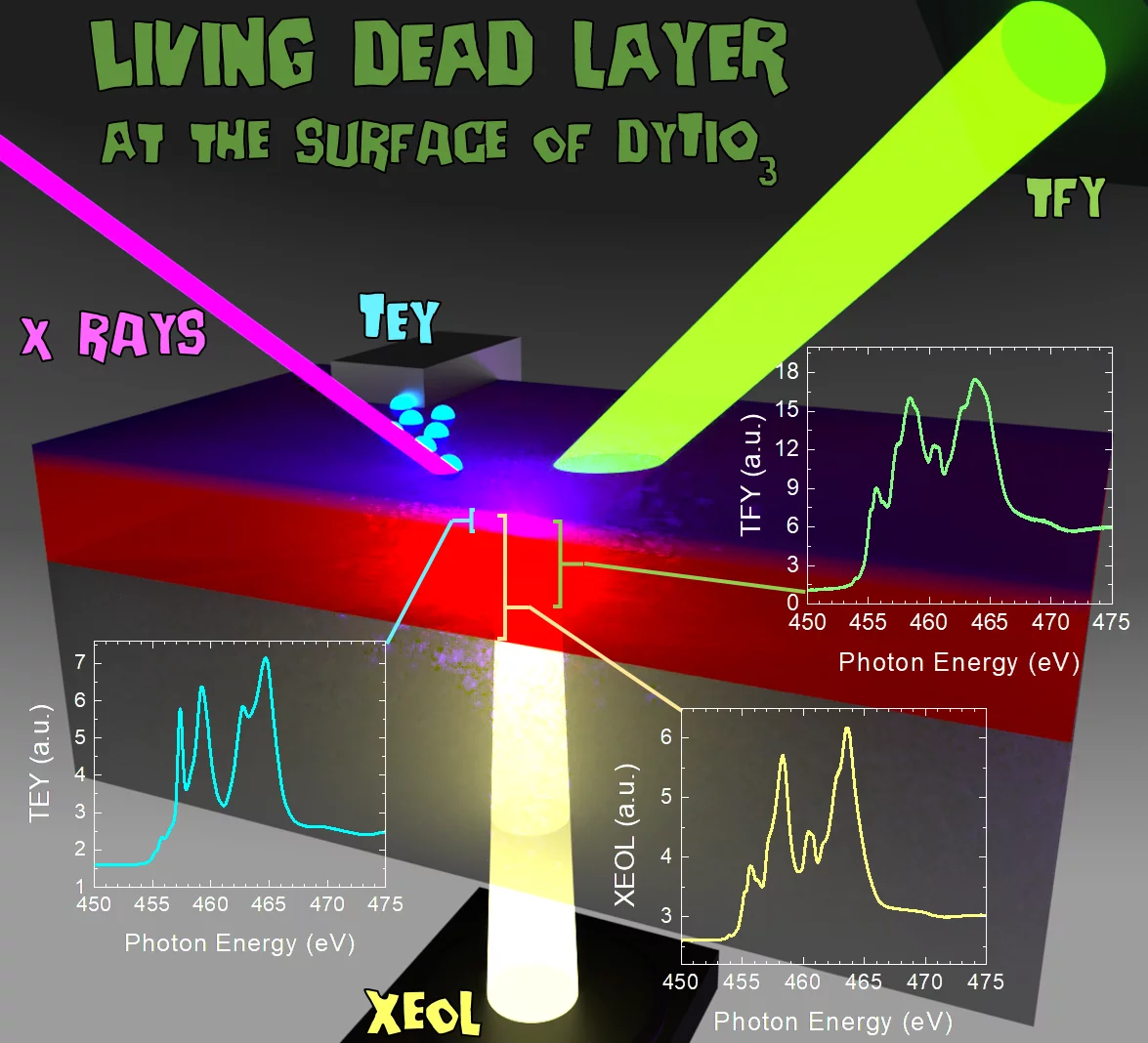When ferromagnetic films become ultrathin, key properties such as the Curie temperature and the saturation magnetization are usually depressed. This effect is thoroughly investigated in magnetic oxides such as half‐metallic manganites, but much less in ferrimagnetic insulating perovskites such as rare‐earth titanates RTiO3, despite their appeal to design correlated 2D electron gases. Here, the magnetic properties of epitaxial DyTiO3 thin films are reported. While films thicker than about 50 nm show a bulk‐like response, at low thickness a surprising increase of the saturation magnetization is observed. Through depth‐dependent X‐ray absorption and photoemission spectroscopy, it is shown that the “living‐dead layer” corresponds to surface regions where magnetic (S = 1/2) Ti3+ ions are replaced by nonmagnetic Ti4+ ions. Hysteresis cycles at the Dy M5 and Ti L3 edges indicate that the surface Ti4+ ions decouple the Dy3+ ions, thus unleashing their strong paramagnetic response. The depth dependent X-ray absorption measurements were obtained by using three different types of detection as shown in the figure. The measurements were performed at the X-Treme beamline of the Swiss Light Source.
Contact
Dr. Cinthia PiamontezeLaboratory Condensed Matter
Swiss Light Source, Paul Scherrer Institute
5232 Villigen PSI, Switzerland
Telephone: +41 56 310 58 55
E-mail: cinthia.piamonteze@psi.ch
Dr. Manuel Bibes
Unité Mixte de Physique, CNRS, Thales
Université Paris‐Saclay
Palaiseau, France
Telephone: +33-1-6941-5849
E-mail: manuel.bibes@cnrs-thales.fr
Original Publication
A Living‐Dead Magnetic Layer at the Surface of Ferrimagnetic DyTiO3 Thin FilmsRaphaël Aeschlimann, Daniele Preziosi, Philipp Scheiderer, Michael Sing, Sergio Valencia, Jacobo Santamaria, Chen Luo, Hanjo Ryll, Florin Radu, Ralph Claessen, Cinthia Piamonteze, Manuel Bibes
Adv. Mater., 30 1707489 (2018)
DOI: 10.1002/adma.201707489

